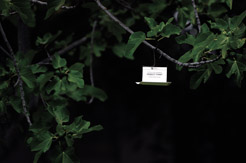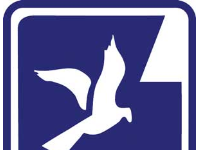Agricultural quarantine area expands as destructive Light Brown
Apple Moth found in Sunnyslope, SJB
Recent discoveries of light brown apple moths in San Juan
Bautista and the Sunnyslope area of Hollister are expected to force
an expansion of the local quarantine area in place to stop the
spread of the destructive insect.
Agricultural quarantine area expands as destructive Light Brown Apple Moth found in Sunnyslope, SJB
Recent discoveries of light brown apple moths in San Juan Bautista and the Sunnyslope area of Hollister are expected to force an expansion of the local quarantine area in place to stop the spread of the destructive insect.
Approximately one dozen of the moths have been found by local, state and federal agriculture officials in traps throughout San Benito County, according to Agriculture Commissioner Paul Matulich.
The moth, which is native to Australia and is found in New Zealand, the United Kingdom and Hawaii, can feed on more than 2,000 plant species and 250 crops, according to the state department of food and agriculture. When it feeds on hosts, such as ornamental plants, citrus, grapes and deciduous fruit crops, it can damage them or spoil their appearance.
“Right now, we’re just trapping and identifying the moths,” said Matulich, who added that the state is planning to release sterile insects in the Napa Valley in the coming months. The sterile moths may be released elsewhere later, though that may hinge on a draft environmental impact report for the Light Brown Apple Moth program that is in the midst of a 60-day public review period that ends Sept. 28.
As of July 31, nearly 3,500 square miles were under apple moth quarantine in California, where more than 110,000 of the insects have been trapped. The quarantine regulations prohibit the movement of all nursery stock, cut flowers, and fruits and vegetables that host the moth unless they have been certified as pest-free by an agriculture official; is purchased at a retail outlet; or was produced outside of the area “and is passing through in accordance with accepted safeguards.”
Matulich said the recent apple moth discoveries in San Benito County will likely expand the quarantine area south past Ridgemark and east toward Best Road.
“We’ve got a newly proposed map that will take in nearly all of the San Juan Valley,” he said, noting that moths were found in a trap near cherry and plum trees near the St. Francis Retreat. “Eventually, I figure anything from Tres Pinos north will end up in quarantine. Most of it is covered right now, so if we keep finding moths here, there and everywhere, eventually all the lines will come together.”
As moths are found, quarantine areas are expanded and more traps are set, Matulich said.
“The federal people [from the United States Department of Agriculture] are doing the trapping,” he said. “Our people are working with nurseries and other locations.”
For example, the ag commissioner’s office has inspectors at Natural Selection Foods and Church Brothers Produce in San Juan Bautista every weekday.
“The quarantine is making foreign countries require inspections and certifications before produce can be shipped,” Matulich said. “Any grower that calls and requests us to certify their produce we have to go look at it and issue a sanitary certificate.”
In recent years, aerial spraying in Monterey County caused a public uproar and lawsuits by people who were concerned about the effects the treatment would have on humans.
Matulich predicted new eradication proposals will “be blown out of proportion by the people who are wound up by the original spraying they did in Monterey County.” Local growers, he added, “do enough spray treatments during the year that they control [the moths] as it is.” Wider-scale spraying by state or federal agencies faces more hurdles as they need to conduct environmental studies on large areas as well as likely face lawsuits designed to halt plans involving chemical treatments.
According to a state department of food and agriculture news release, the EIR now under review evaluates the environmental affects of various strategies and methods for eradicating the Light Brown Apple Moth. Upcoming public comment sessions are planned in Fresno on Aug. 24, Sacramento on the 25th, Sonoma on the 26th, Watsonville on the 31st and Oakland on Sept. 1. Written comments are due Sept. 28.
“All we can do right now is keep on trapping and see how the EIR turns out,” Matulich said. “Plus, we’ll see if the sterile moth program does a good job.”
For more information on the EIR, go to www.cdfa.ca.gov/go/lbameir.









